| Back to Back Issues Page |
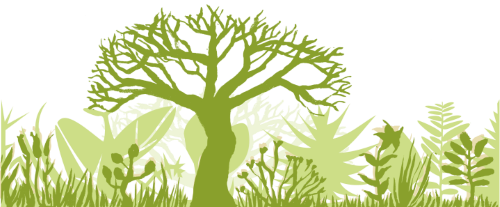 |
|
Restore Nature, Issue #18 November 14, 2024 |
HelloRESTORE NATURE NEWSLETTERNovember 2024Building a community wild flower garden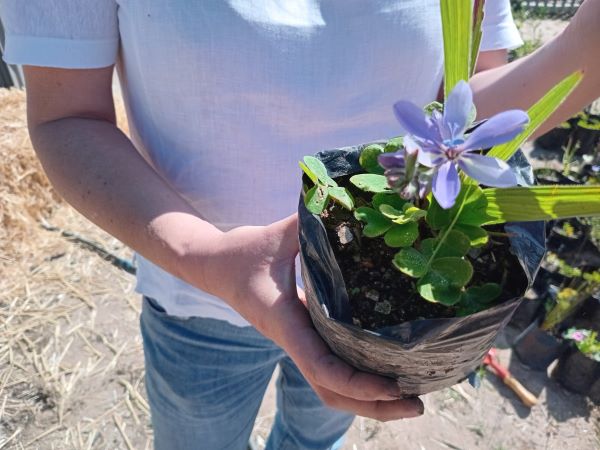
Louise holds a beautiful Babiana ready for planting. This newletter's theme is biodiversity education centred around plants. A previous article covered a similar theme with the launch of Casabio, an online platform for botany and citizen science and there is a link to the article below. The platform is hosted by the Council for Scientific Research of South Africa and uses AI assisted apps. So that is the newcomers to the high tech end of the battle for our biodiversity. This article is about something much more hands on, which focuses on community involvement of another kind, with spades and trowels. We were invited via Whatsapp to come and help plant Renosterveld plants at Sluysken Park in Cape Town. 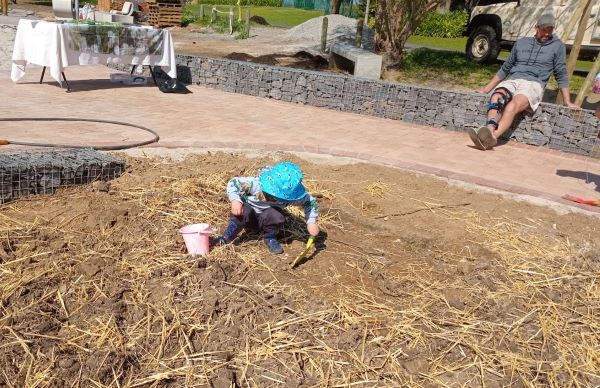
It seems like the smaller the volunteer the bigger the passion ! The organizer Louise Ferreira told me that at the last plantup, when they did Goewerneur Park, some of the children became so enamoured of the idea that they want to visit the park every day, and every day there is something new to see. The pollinators and other insects and small wildlife have already 'found' it and are making themselves at home, and the children are so interested in the insects, said Louise with obvious pride and a twinkle in her eye. It is proving to be a fabulous tool for educating the next generation. So I drove up there with the digging tools in my boot and a big hat, and my cell phone in my pocket, looking forward to seeing everything. The garden had been laid out by a professional designer and a snaking path wound gradually downhill between the beds. Plant bags were lined up on the freshly dug beds and the local team of park manager Nathan and planters Robert and Sipho were there to prepare more beds. 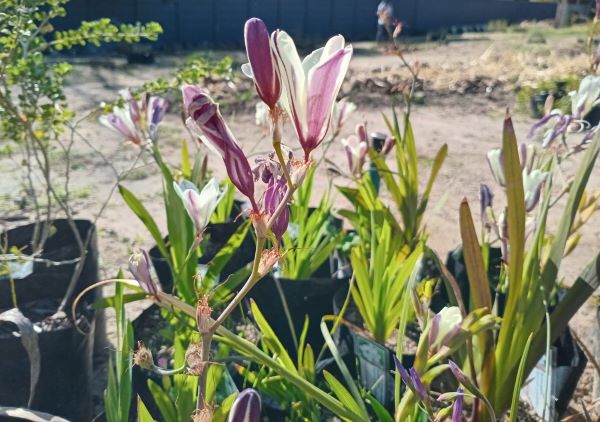
These gorgeous 'Lily' has suffered lately in areas it used to carpet, nice comeback ! Because it is on a clay soil slope, the vegetation in the stepping stone garden must be Renosterveld, Louise explained. In addition it is able to stand higher organic matter in the soil, and I guess that is necessary considering its as hard as a rock, even though dampish. The surface was strewn with straw. We also used straw to make little 'nessies' or nests around the freshly planted seedlings so that the were visible on the dark red earth, and we could all avoid standing on them. In contrast said Louise, Fynbos cannot take too much soil amendement of this kind as it is evolved to grow in practically pure silica sand. We began to plant. Educational labels were inserted by Louise as the volunteers moved through the beds planting. Volunteers, often whole families, arrived in dribs and drabs and each time Louise went to great pains to explain to the little children what this was all about. She explained the various stages of endangerment in red listed plants, in increasing levels of threat, from 'least concern', 'near threatened', 'vulnerable' to 'endangered', 'critically endangered', 'extinct in the wild' and 'extinct'.
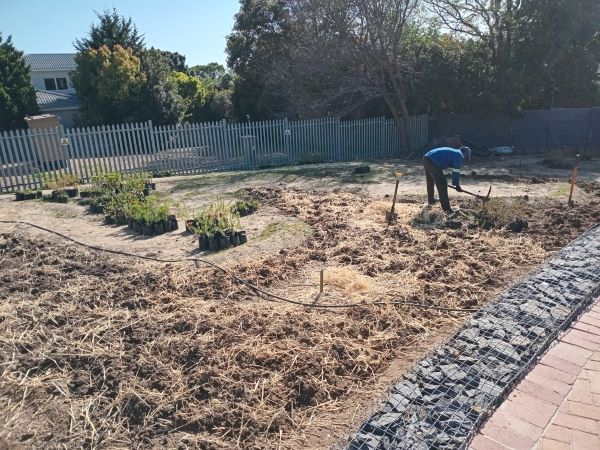
The hard clay soil needed a little loosening before planting, with the use of a pick and addition of organic matter. Renosterveld itself, the vegetation type, is one of the most threatened habitats on earth. This is because its soils, unlike Fynbos, are highly fertile and much of it is on the flat land or lower slopes of mountains ideal for agriculture and building. As Louise explained again and again to the arriving parties how special this little garden and the plants in it would be, both children, their parents and myself learned a lot. I've written an article with a lot more information about the volunteers, the Renosterveld and last but not least, how to do this yourself, in your own neighbourhood. Please refer to the article on Sluysken Park below, to find out more. 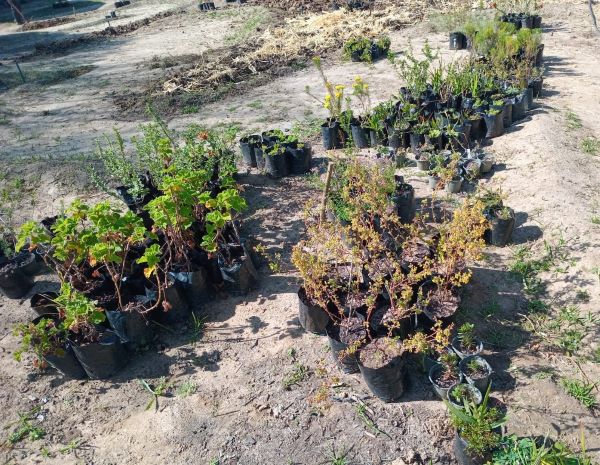
When planting up a wild flower garden from scratch, lots of plants need to be sourced. Sometimes seeds are broadcast but in our climate we have to raise them up before planting out. benefits-of-biodiversity.html biodiversity-project-Casabio.html Topic suggestions welcomeYou may write to me anytime at the website greenidiom by filling out a comment. You can also use my webmail (website mail) address greenidi@greenidiom.com. Have you missed anything ?Please go to back issues right below if you want to catch up with what I've sent thus far as preamble for the course, as well as previous newsletters. |
| Back to Back Issues Page |